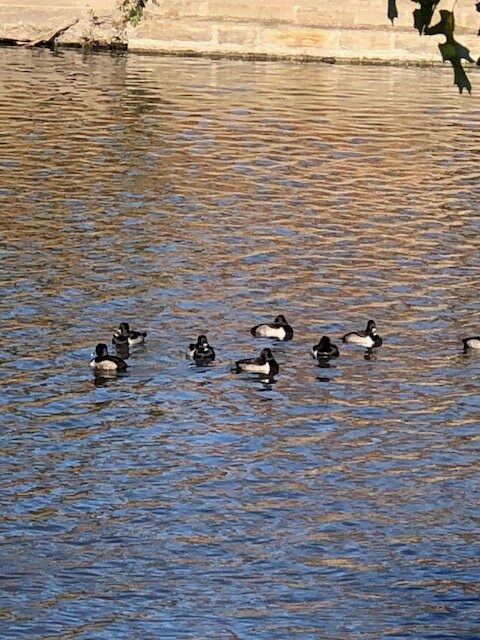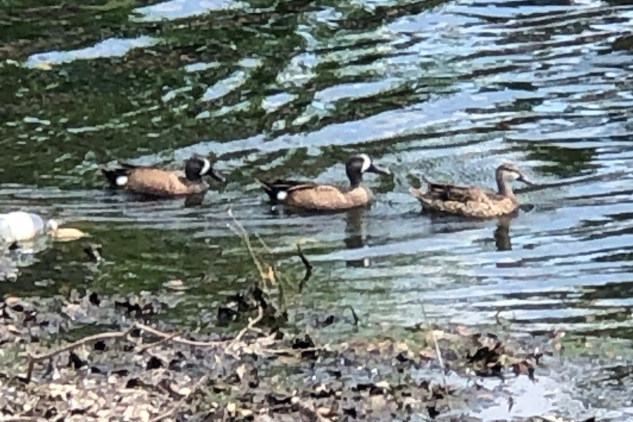Barbara Hibberd, Class of 2023
For many, the first introduction to birding came by observing ducks at a local park or creek. In previous days people would often bring bread to entice the ducks. Now many communities restrict bread feeding because it wasn’t nutritious. Even without being fed, ducks can be approached closely enough to be easily observed and identified without binoculars. They congregate in neighborhood parks and ponds where they are easily accessible.
Many people are familiar with the mallard, a duck with worldwide distribution that is present in Texas year-round. Sometimes domestic ducks (which are bred from Mallards) and Muscovy ducks (natives of Central and South America) are also found. In this case, the mallards wandered up from the creek by my house and congregated in our yard.

Starting in the fall (usually between Halloween and Thanksgiving) several other species of ducks arrive to spend the winter. I am fortunate to live by Big Lake Park in Plano which is home to many interesting ducks. My husband and I also often picnic at Bethany Lakes Park in Allen where we can find several species that don’t come to the creek by our house.
The first scout to arrive last year (on October 25) was this male wigeon. Soon, a consistent flock with roughly equal numbers of males and females. This duck’s calls sound like squeaky toys.

Another regular visitor is the Lesser Scaup Duck. Some scholars think the species name comes from the calls made by the males. We’ve observed flocks at Bethany Park as well as Big Lake since the early 2000s and have many pictures. We’ve noticed that the ratio of males to females is high, often as much as 5/1 or more until spring. The circled duck in the picture below was the only female in this group at Big Lake Park. Ducks Unlimited mentions that for some species the males and females migrate at different times. The females arrive and the ducks begin to leave a few at a time.

A species with a similar appearance and migration pattern is the Ring-Necked duck. The name was given by early naturalists who examined dead specimens. It is extremely hard to see in live birds unless one is extremely close. This species behaves completely differently than scaups. They avoid people and other ducks. In previous years, they have not remained for more than a few days, but this year, a flock remained for about two weeks.

A pleasant surprise came late in the season when a group of four male and three female blue winged teals stopped for a visit that lasted several days. Their short trills were reminiscent of the swallows who were also arriving.

Since my husband works in Allen, we also visit Bethany Lakes Park for fall picnic lunches. Bethany Lakes seems to attract other species such as Gadwalls and Shovelers, which only occasionally visit Big Lake Park


We have also spotted two other bay duck species at Bethany Lakes Park which have been exciting additions to our life lists. They were a male Redhead spotted in March 2022, and three male Canvasbacks spotted in February 2023. These apparently were transients passing through at the end of migration season.


Observing ducks has proven to be an interesting and enjoyable hobby. I am hoping that the coming cold fronts will bring this year’s scouts and migrants along with cooler temperatures.



